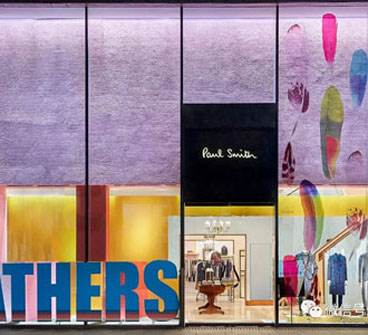More than 60% of consumers trek to the mall for apparel as opposed to shopping for clothing online. And another 39% prefer to hit the mall in order to visit multiple retailers in one location, as well as try on and compare clothing options, according to a survey of regular mall shoppers by Valassis.
So despite the trend of shoppers all turning online, heading to a mall still offers unique advantages.
“The biggest challenges malls face are the rise of e-commerce, which will not slow down any time soon and a shift in consumer behavior to favor and seek experiences. But, by listening to consumer demands, malls can win back in-store foot traffic and become a stronger destination for shopping, eating and entertainment,” Curtis Tingle, chief marketing officer at Valassis, told FierceRetail. “Malls clearly still have a strong opportunity to innovate and better cater to consumer preferences.”
Another advantage includes the social aspect of spending time with family or friends, 24%; convenience of a quick gift purchase, 20%; an experience including dining and entertainment, 19%; and the ability to comparison shop, 18%.
But what about the other sector of shoppers, the ones that cannot bear to enter a mall? Of those surveyed, 40% prefer shopping online for a broader range of product selection. Another 38% want to avoid crowds and parking, and 24% don’t want to travel at all. Yet another 16% want to reduce impulse purchases that could take place at a mall. Still, some of these respondents admitted they might be swayed if the malls had greater savings, 60%; better parking, 20%; events such as pop-up shops and giveaways, 18%; and onsite grocery shopping options, 17%.
Valassis notes that malls are starting to integrate more technology, but still have a long way to go. For example, only 24% of shoppers have been able to use a cashier-less checkout service and 20% have used digital wallets. Only 7% of shoppers have interacted with voice assistants, augmented reality or virtual reality and 51% have yet to encounter what they think is innovative technologies.
Tingle says that consumer preferences change so rapidly these days that it can be hard for retailers to keep up, especially malls, as they are weighed down by heavy debt that is lingering from marketing consolidation or economic recovery.
But some malls operators are taking notice. Tingle refers to the plans for the largest mall in America, complete with an indoor ski slope and theme park rides.
“In the future, I believe we can expect to see malls encompass around one-third retail space, and two-thirds entertainment,” he said.
So who is responsible for the future of the mall: retailers or mall operators?
Tingle notes that both retailers and mall operators have the opportunity to incorporate unique and exceptional experiences for consumers.
For retailers, it requires new technology in order to better track what consumers want, their product preferences, how they like to be communicated with and what their online and offline shopping behaviors are. In addition, retailers need to closely listen to consumer feedback, offering more coupons and deals as well as in-store events.
On the operators’ side, malls can incorporate features that enhance the convenience and expand the experiences offered to shoppers.
“Ultimately, they need to ensure they are better serving the needs, wants and desires of their shoppers—offering services like valet parking, interactive maps, smartphone applications and more are an easy start,” Tingle said. “Sometimes convenience could look unconventional—for instance, mall operators could bring in grocery-focused tenants.”





